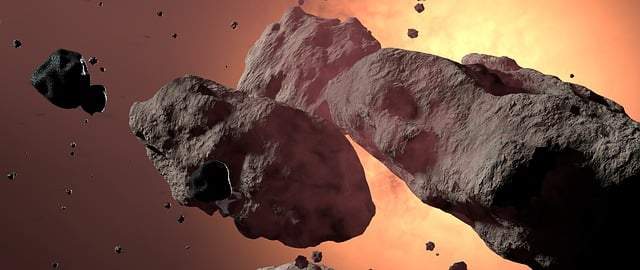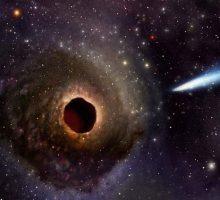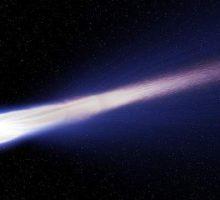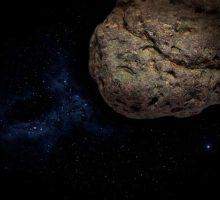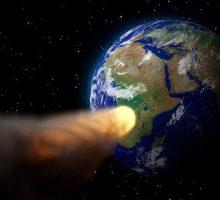- Introduction to Comets
- What are comets?
- Characteristics of comets
- History of comet observation
- Anatomy of Comets
- Nucleus
- Coma
- Tail(s)
- Jets
- Types of Comets
- Short-period comets
- Long-period comets
- Halley-type comets
- Jupiter-family comets
- Formation and Composition of Comets
- Oort Cloud and Kuiper Belt
- Composition of comets
- Isotopic composition of comets
- Relationship to other Solar System bodies
- Comet Exploration Missions
- Halley’s Comet missions
- Deep Impact mission
- Rosetta mission
- Stardust mission
- Impact of Comets on Earth
- Crater formation
- Mass extinctions
- Historical impacts
- Future threats
- Folklore and Culture of Comets
- Comets in ancient cultures
- Superstitions surrounding comets
- Comets in literature and art
- Modern-day comet watching
- Current Research and Future Directions
- Current comet research topics
- Upcoming comet missions
- Theoretical models of comet formation and evolution
Introduction to Comets
Comets are one of the most fascinating objects in our Solar System. They are icy bodies that orbit the Sun and provide valuable insights into the formation and evolution of our Solar System. In this blog post, we will take a closer look at comets, their anatomy, types, and their significance.
Anatomy of Comets
Comets have a unique anatomy that sets them apart from other objects in our Solar System. They consist of a small, solid, icy core called the nucleus, which can be as small as a few meters or as large as tens of kilometers in diameter. As comets approach the Sun, they heat up and develop a coma, which is a cloud of gas and dust that surrounds the nucleus. The coma can be many times larger than the nucleus itself and is made up of gas and dust that have been ejected from the nucleus due to the Sun’s heat and radiation pressure. As the coma interacts with the solar wind, it forms one or more tails that can extend for millions of kilometers into space.
Types of Comets
Comets can be classified into two broad categories based on their orbital periods. Short-period comets take less than 200 years to complete one orbit around the Sun, while long-period comets take thousands or even millions of years to complete one orbit. Short-period comets are thought to originate from the Kuiper Belt, a region beyond the orbit of Neptune that is home to many icy bodies. Long-period comets, on the other hand, are thought to come from the Oort Cloud, a much more distant region of the Solar System that is believed to contain trillions of comets.
Significance of Comets
Comets have played a significant role in the history of Earth. Some scientists believe that a large comet impact may have caused the extinction of the dinosaurs 65 million years ago. More recently, in 1994, Comet Shoemaker-Levy 9 collided with Jupiter, providing scientists with a unique opportunity to study the effects of a comet impact on a gas giant planet. Comets also offer valuable insights into the early Solar System and the processes that shaped it. The study of comets is an active area of research, with scientists using both ground-based telescopes and spacecraft to observe and study these objects.
Anatomy of Comets
Comets are one of the most enigmatic and mysterious objects in our Solar System. Their anatomy is fascinating, with a small, solid, icy core called the nucleus, which can range from a few meters to tens of kilometers in diameter, being surrounded by a coma, a cloud of gas and dust, which can be many times larger than the nucleus itself. In this blog post, we will explore the anatomy of comets in more detail.
Nucleus of Comets
The nucleus of a comet is a small, icy body that is the heart of the comet. The composition of the nucleus varies from comet to comet, but it is mainly made up of water ice, carbon dioxide ice, and other frozen gases. The nucleus is also rich in dust, with some comets having a layer of dark, organic material on their surface. The size of the nucleus can range from a few meters to tens of kilometers in diameter.
Coma of Comets
The coma of a comet is a cloud of gas and dust that surrounds the nucleus. As the comet approaches the Sun, the heat causes the frozen gases in the nucleus to sublimate, or turn into gas. This gas, along with the dust particles, forms the coma. The coma can be many times larger than the nucleus itself and can extend up to millions of kilometers into space.
Tails of Comets
Comets also have tails, which are a result of the interaction between the coma and the solar wind. There are two types of tails: ion tails and dust tails. Ion tails are formed by the solar wind interacting with the ions in the coma, while dust tails are formed by the solar wind pushing the dust particles in the coma away from the nucleus. The tails can extend for millions of kilometers into space, creating a spectacular sight.
Types of Comets
Comets are icy bodies that orbit the Sun and are classified into two broad categories based on their orbital periods. In this blog post, we will explore the two types of comets and their characteristics.
Short-Period Comets
Short-period comets have orbital periods of less than 200 years and are thought to originate from the Kuiper Belt, a region beyond the orbit of Neptune that is home to many icy bodies. These comets have relatively small nuclei, typically less than 10 kilometers in diameter. The short-period comets are believed to be remnants of the early Solar System, and their orbits are influenced by the gravitational pull of the giant planets, particularly Jupiter.
Long-Period Comets
Long-period comets have orbital periods of thousands or even millions of years and are thought to come from the Oort Cloud, a much more distant region of the Solar System that is believed to contain trillions of comets. These comets have larger nuclei, typically 10 to 50 kilometers in diameter. Long-period comets are thought to be pristine remnants of the early Solar System, and their orbits are influenced by the gravitational pull of nearby stars as they pass through the galaxy.
Characteristics of Comets
Both short-period and long-period comets have similar physical characteristics. They consist of a small, solid, icy core called the nucleus, which is surrounded by a coma, a cloud of gas and dust that can be many times larger than the nucleus itself. As the comet approaches the Sun, the heat causes the frozen gases in the nucleus to sublimate, creating a coma. The coma can form one or more tails, which can extend for millions of kilometers into space. The tails are formed by the interaction between the coma and the solar wind, which is a stream of charged particles that flows from the Sun.
Formation and Composition of Comets
Comets are some of the oldest and most primitive objects in our Solar System. They contain clues to the conditions that existed when the Solar System was forming, as well as the processes that have shaped it over billions of years. In this blog post, we will explore the formation and composition of comets.
Formation of Comets
Comets are believed to have formed from the same cloud of gas and dust that gave birth to the Sun and the planets. As the cloud collapsed under its own gravity, it began to spin and flatten into a disk. The material in the disk eventually coalesced into the planets, but some of it remained as smaller bodies like comets. These objects formed in the outer reaches of the Solar System, where the temperatures were low enough for volatile compounds like water, methane, and ammonia to freeze into solid ice.
Composition of Comets
Comets are composed of a mixture of rock, dust, and ices, including water, carbon dioxide, methane, and ammonia. The exact composition of a comet depends on its origin and history, but scientists have analyzed the composition of several comets through spacecraft missions and ground-based observations.
The nucleus of a comet is made up of rock and dust particles held together by frozen ices. These ices can include water, carbon dioxide, methane, and ammonia, as well as more complex organic molecules. The surface of the nucleus can be covered in a layer of dark material, which is thought to be organic compounds that have been altered by radiation and other processes.
As a comet approaches the Sun, the heat causes the frozen ices in the nucleus to sublimate, creating a coma of gas and dust around the nucleus. The gases released by the comet include water vapor, carbon monoxide, and nitrogen, as well as other trace elements. The dust particles released by the comet are thought to be a mixture of silicates and organic compounds.
Studying the composition of comets can provide valuable insights into the conditions that existed in the early Solar System and the processes that have shaped it over time. For example, the ratio of certain isotopes in comet samples can help scientists understand how the Solar System’s composition has evolved over time.
Comet Exploration Missions
Comets have been studied for centuries, but it wasn’t until the development of spacecraft technology that we were able to get up close and personal with these enigmatic objects. In this blog post, we’ll explore the history of comet exploration missions and the insights we’ve gained from them.
Early Comet Missions
The first spacecraft to fly by a comet was NASA’s International Cometary Explorer (ICE), which flew by Comet Giacobini-Zinner in 1985. ICE was actually a repurposed spacecraft that had been launched in 1978 to study Earth‘s magnetosphere. After completing its primary mission, NASA sent the spacecraft on a trajectory that would take it through the tail of Comet Giacobini-Zinner.
Following the success of ICE, several more comet missions were launched in the 1990s, including the European Space Agency’s Giotto mission to Comet Halley and NASA’s Stardust mission to Comet Wild 2. These missions provided valuable insights into the structure and composition of comets, as well as the dynamics of their tails and comas.
Recent Comet Missions
In recent years, several more comet missions have been launched, including NASA’s Deep Impact and Rosetta missions. Deep Impact deliberately crashed a spacecraft into the nucleus of Comet Tempel 1 in order to study the composition and structure of the nucleus, while Rosetta orbited Comet 67P/Churyumov-Gerasimenko for over two years, making detailed observations of its surface and coma.
Perhaps the most exciting discovery made by the Rosetta mission was the detection of organic molecules on the surface of Comet 67P, including the amino acid glycine. This suggests that comets may have played a role in the origin of life on Earth.
Future Comet Missions
There are several more comet missions planned for the near future, including NASA’s Lucy mission to study Trojan asteroids, which are believed to be remnants of the same cloud of gas and dust that gave rise to the comets. Additionally, the European Space Agency is planning a mission called Comet Interceptor, which will be capable of intercepting a comet that has never been studied before.
Impact of Comets on Earth
Comets have been a source of fascination for humans for thousands of years, but they also pose a potential threat to our planet. In this blog post, we’ll explore the impact that comets have had on Earth throughout history, as well as the potential dangers posed by future comet impacts.
Historical Impacts
There is evidence to suggest that comets have impacted Earth throughout history. One of the most well-known examples is the Tunguska event, which occurred in Siberia in 1908. The explosion, which was caused by the impact of a small comet or asteroid, flattened over 2,000 square kilometers of forest and was estimated to be equivalent to the explosion of 10-15 million tons of TNT.
Another famous impact was the Chicxulub impact, which occurred 66 million years ago and is believed to have caused the extinction of the dinosaurs. The impact was caused by a comet or asteroid approximately 10 kilometers in diameter, which struck the Yucatan Peninsula in Mexico and caused a global cataclysm.
Potential Dangers
While the likelihood of a catastrophic comet impact in the near future is relatively low, it is still a concern for scientists and policymakers. In 1994, Comet Shoemaker-Levy 9 collided with Jupiter, providing a vivid demonstration of the destructive power of comets. If a similar comet were to impact Earth, the results could be catastrophic.
To mitigate the risk of a comet impact, scientists are working to identify and track potentially hazardous objects in our Solar System. In addition, there are plans to launch missions to deflect any objects that pose a threat to Earth. The European Space Agency’s Hera mission, which is set to launch in 2024, will test a technique for deflecting asteroids by crashing into them with a spacecraft.
Folklore and Culture of Comets
Comets have captivated the imagination of people for thousands of years. Their fiery trails across the sky have been interpreted in many different ways by different cultures throughout history. In this blog post, we’ll explore the fascinating folklore and cultural significance of comets.
Folklore and Mythology
Many cultures throughout history have developed fascinating stories and myths around comets. In ancient China, comets were seen as harbingers of change, often signaling the birth or death of a ruler. In Europe during the Middle Ages, comets were often seen as omens of impending disaster, such as war, famine, or the death of a monarch.
In ancient Greece, comets were often seen as divine messengers or signs from the gods. The famous philosopher Aristotle believed that comets were a combination of air and fire, and that they were caused by the evaporation of gases from the Earth’s atmosphere.
Cultural Significance
Comets have also played an important role in art and literature throughout history. One of the most famous examples is Halley’s Comet, which has been depicted in art and literature since ancient times. In the 11th century, the Bayeux Tapestry depicted Halley’s Comet as a fiery dragon, while the famous composer George Frideric Handel composed a piece of music to celebrate the comet’s return in 1742.
Comets have also played an important role in popular culture. The 1970s saw a surge in interest in comets, with the appearance of Comet Kohoutek and the successful mission of the spacecraft Vega 1 and Vega 2 to study Halley’s Comet in 1986.
Current Research and Future Directions
Comets have fascinated astronomers and scientists for centuries, and research into these celestial objects continues to this day. In this blog post, we’ll explore the current state of research into comets and the future directions that this research is taking.
Current Research
Recent years have seen a surge in research into comets, driven in large part by the success of space missions such as the European Space Agency’s Rosetta mission, which landed a probe on the surface of Comet 67P/Churyumov–Gerasimenko in 2014. This mission provided scientists with a wealth of data about the composition and structure of comets, and has led to many new insights into the formation and evolution of our Solar System.
One of the most exciting areas of current research into comets is the study of their organic molecules. Comets contain a rich array of organic compounds, including amino acids, which are the building blocks of life. Scientists are studying these molecules to better understand how life may have arisen on Earth, and whether comets may have played a role in the delivery of organic molecules to our planet.
Future Directions
Looking ahead, there are many exciting new directions that research into comets is taking. One area of focus is the study of “interstellar” comets, which originate from outside our Solar System. In 2017, astronomers discovered the first interstellar comet, named 1I/’Oumuamua, and this has sparked a renewed interest in studying these objects. By studying interstellar comets, scientists hope to gain a better understanding of the processes that shape the formation and evolution of planetary systems beyond our own.
Another area of future research into comets is the development of new space missions to study these objects in greater detail. In 2028, NASA’s Comet Interceptor mission is set to launch, which will study a comet as it approaches the Sun. This mission will be the first to study a pristine comet that has never before entered the inner Solar System, providing scientists with a unique opportunity to learn more about the composition and structure of these enigmatic objects.

